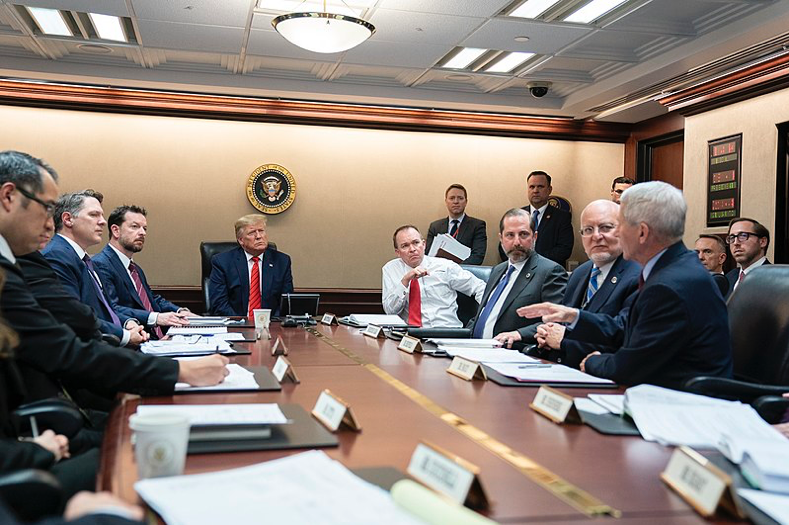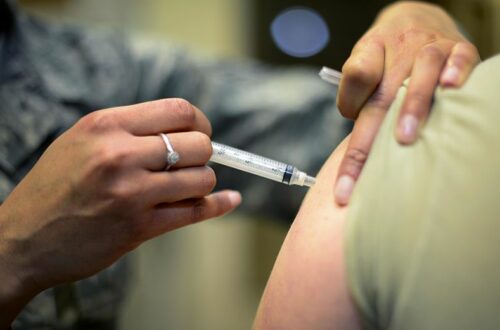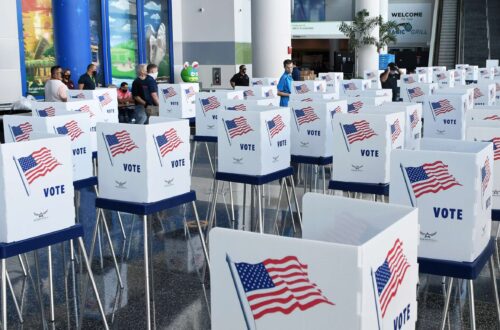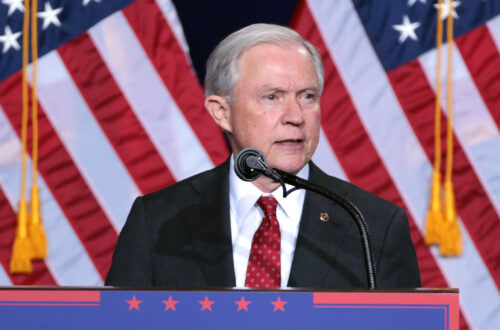After President Donald Trump’s July 31 visit to Tampa where he attended a COVID-19 and storm preparedness roundtable, a journalist at the meeting tested positive for COVID-19.
Everyone in attendance at the meeting had been tested before entry, yet newly infected people can receive a negative test result if the virus has not accumulated enough viral particles.
The test result came back two days after being exposed to state officials such as Gov. Ron DeSantis, Sen. Rick Scott, Sen. Wilton Simpson, Pinellas County Commissioner Kathleen Peters, Rep. Danny Perez, and Safety Net Hospital Alliance of Florida CEO Justin Senior.
According to The White House Correspondents’ Association, measures were taken to minimize the spread of COVID-19 among those who were exposed.
“We’ve already reached out to those who were in the pools with this individual, and the White House Medical Unit is conducting additional contact tracing and providing follow-up tests for those in the pools and potentially exposed,” said White House Correspondents’ Association President Zeke Miller.
However, this incident is not the first time Trump and DeSantis have been exposed to COVID-19 within the last few months.
On July 27, DeSantis attended a Florida Sheriff’s Association in-person meeting to discuss confidential information. Shortly after the meeting, five people reportedly tested positive for COVID-19, though it is unclear where they contracted the virus. Many of the sheriffs who attended the meeting were also present at the Tampa roundtable meeting to greet Trump.
“We can’t accomplish everything that needs to be done via a Zoom call…sheriffs only get together once or twice a year to receive valuable training and discuss confidential topics, current public safety trends and best practices, as well as legislative priorities,” Florida Sheriff’s Association spokeswoman Nanette Schimpf stated.
In late May, Vice President Mike Pence’s press secretary, Katie Miller, contracted COVID-19. Shortly after, officials ushered in precautionary measures for White House staff when entering the West Wing, such as the requirement of masks. Notable members of Trump’s White House staff, such as national security advisor Robert O’Brien and top fundraising official Kimberly Guilfoyle, have recently returned to the White House after testing positive for COVID-19.
“I accept this as a blessing from God so that I can understand what other people are going through and those who have lost loved ones,” said Guilfoyle.
Due to the increasing volume of positive COVID-19 results from White House staff, the implementation of random COVID-19 testing began in early August. Since the testing mandate, all officials working in the White House are required to test except for aides who have worked remotely in the last 30 days or those on approved leaves.
“As part of our ongoing efforts to protect the health and safety of the entire White House Complex, randomized testing of the Executive Office of the President staff, which has been ongoing for several months, will become mandatory rather than voluntary,” a White House spokesperson stated to POLITICO.
The increase of testing within the White House comes at odds with Trump’s recent rhetoric regarding the legitimacy and benefits of testing. In a tweet on June 15, Trump claimed that testing “makes us look bad.” Likewise, at his Tulsa rally in late June, Trump called for slowing down the testing for COVID-19.
Despite the increasing occurrence of COVID-19 in the United States, more than 165 vaccines are currently in development around the world.
As of August 12, 31 vaccines have been tested in human trials, with two vaccines granted limited approval. The vaccine process, which typically takes 10 years, has been drastically shortened to confront the urgency of the COVID-19 pandemic.
UF biostatistics assistant professor Natalie Dean told NBC News, “We have to do it right the first time. The public trust is very important in the long term, and people need to be confident that it’s an adequately effective product.”
Featured image: President Donald Trump at COVID-19 briefing on January 29, 2020. (Public domain photo by The White House)





